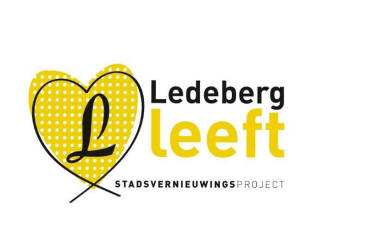Ledeberg Alive
Go to Project Website

‘Ledeberg alive!’ is a major city renewal project in a district in Ghent that faces several challenges on an economic, social and ecological level.
.jpg)
Ledeberg is a district in Ghent which is very densely populated with a high concentration of vulnerable and disadvantaged inhabitants. Ledeberg is part of the so-called 19th century belt: small municipalities around Ghent where industry was previously situated. As with numerous European cities; from the 1970s, due to industrial decline and migration to the outer periphery where new housing estates were being created, led to an impoverished belt around the centre of Ghent, especially in the district of Ledeberg. The urban renewal project Ledeberg Alive adds new value and energy to this historic neighbourhood.
The City authority used an approach called ‘4Ps’ (people, planet, profit, policy) for this project. The aim was to improve the quality of life within six domains:
- creation of more green spaces,
- improved energy efficiency of dwellings,
- improved traffic management,
- encouragement of active travel,
- provision of better transport infrastructure and
- provision of more community spaces.
Key winning elements of the project:
Political leadership with a long term approach - Ledeberg Alive! is part of a major long term political strategy in Ghent. Ghent City Council aims to regenerate different districts situated in the 19th century belt of Ghent and to improve the quality of life of inhabitants in these regions through urban renewal projects. Ledeberg Alive! is one these urban renewal projects.
Collaboration and dialogue with all stakeholders - The project has gathered many key stakeholders and actors, representing many different layers of public organisations as well as societal groups. A Sounding Board Group was created to bring inhabitants and other actors together to shape the project. Children were also involved in the project.
Contribution to multiple policy objectives - The broad variety of impacts that the project has had have been made possible through an integrated approach where different sectors and geographical areas have been connected. Furthermore, the initiative has been linked to other city strategies and projects for additional benefits.
Business models to attract investment - Central to securing resident buy-in and the resulting success of the project was the offer of a subsidy to owners of private houses in the project area to encourage them to make improvements to their homes.
To read a full report on Ledeberg Alive! and why it is a good example of a Lighthouse Initiative click here.
Image: © City of Ghent